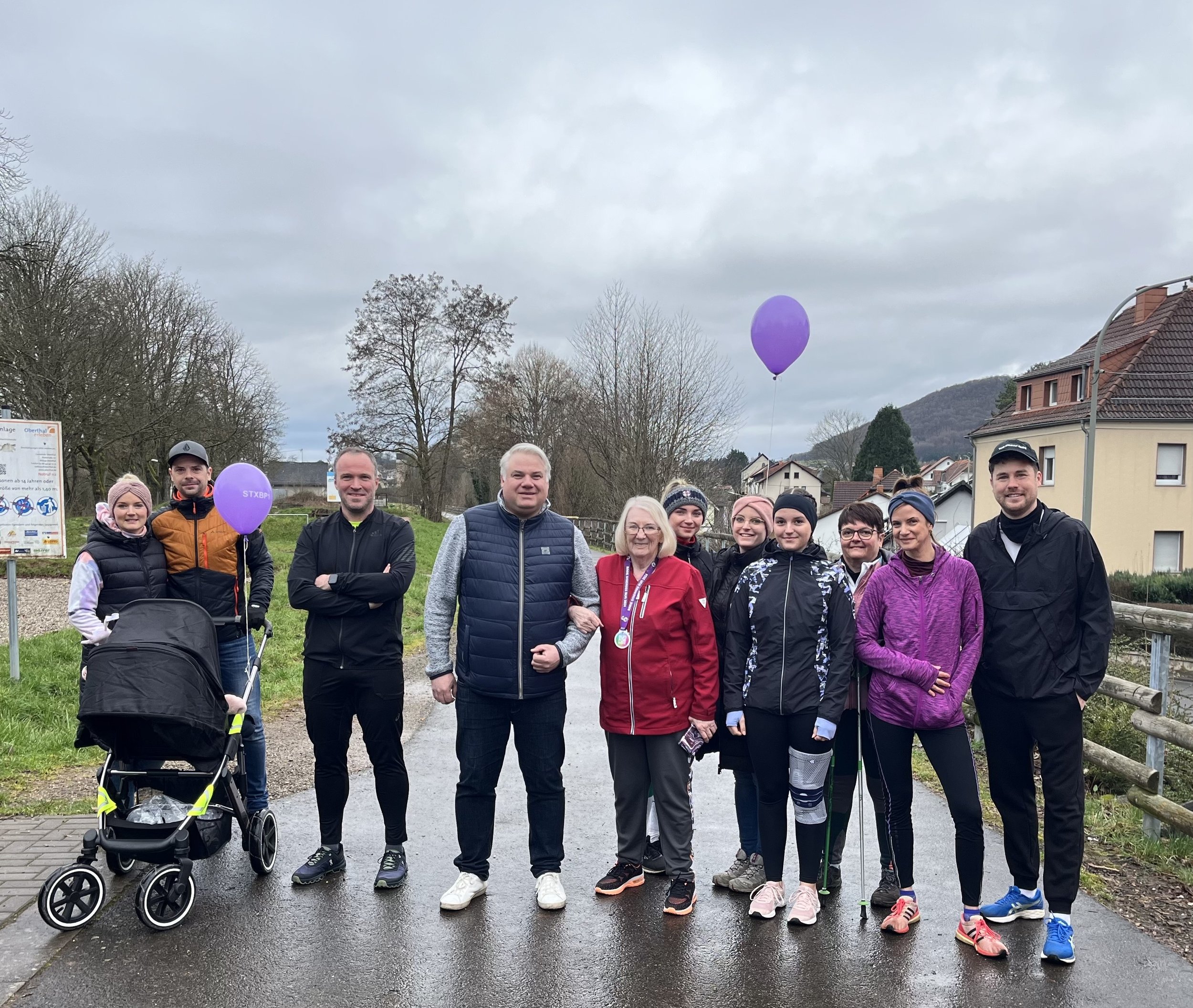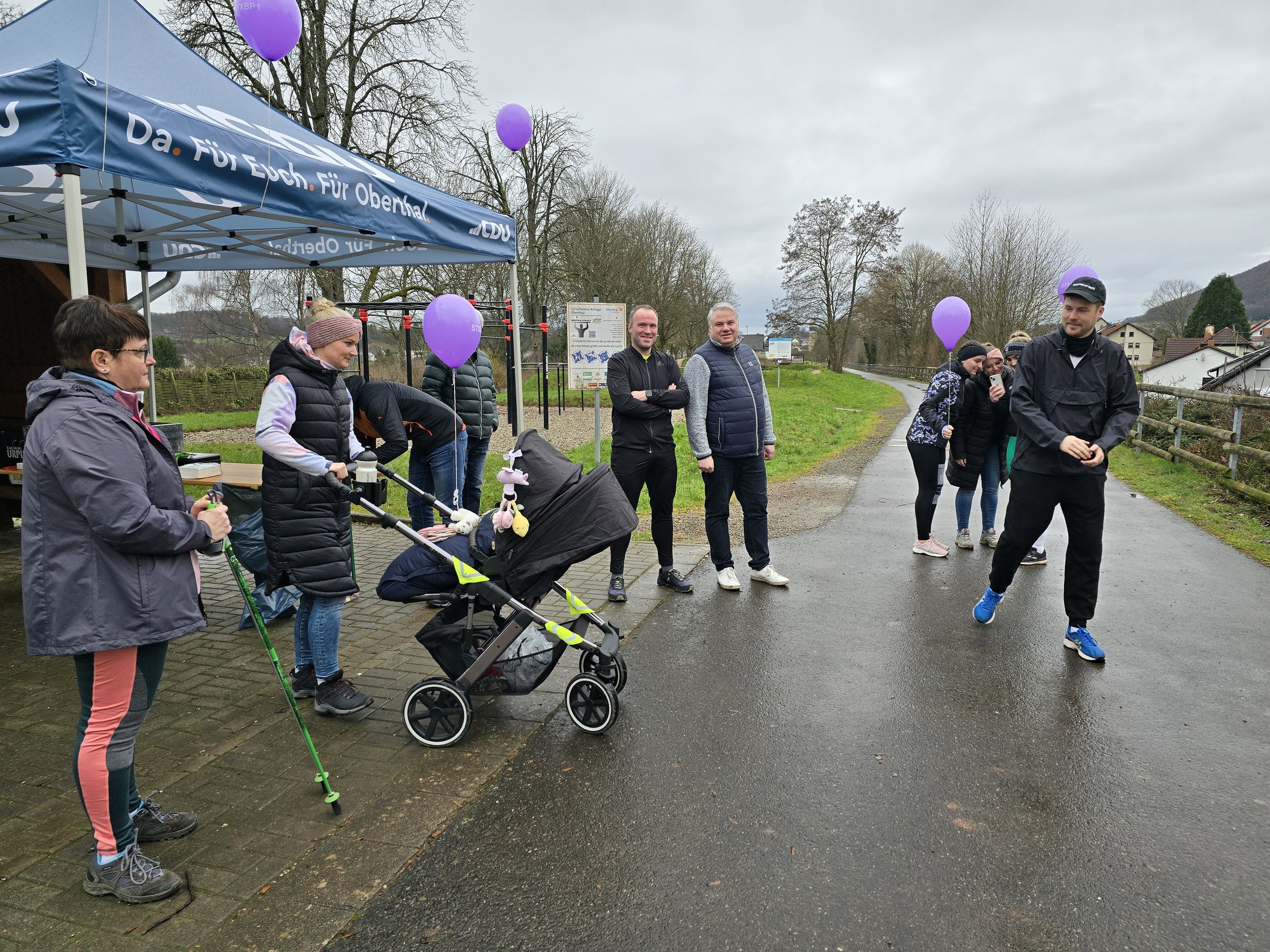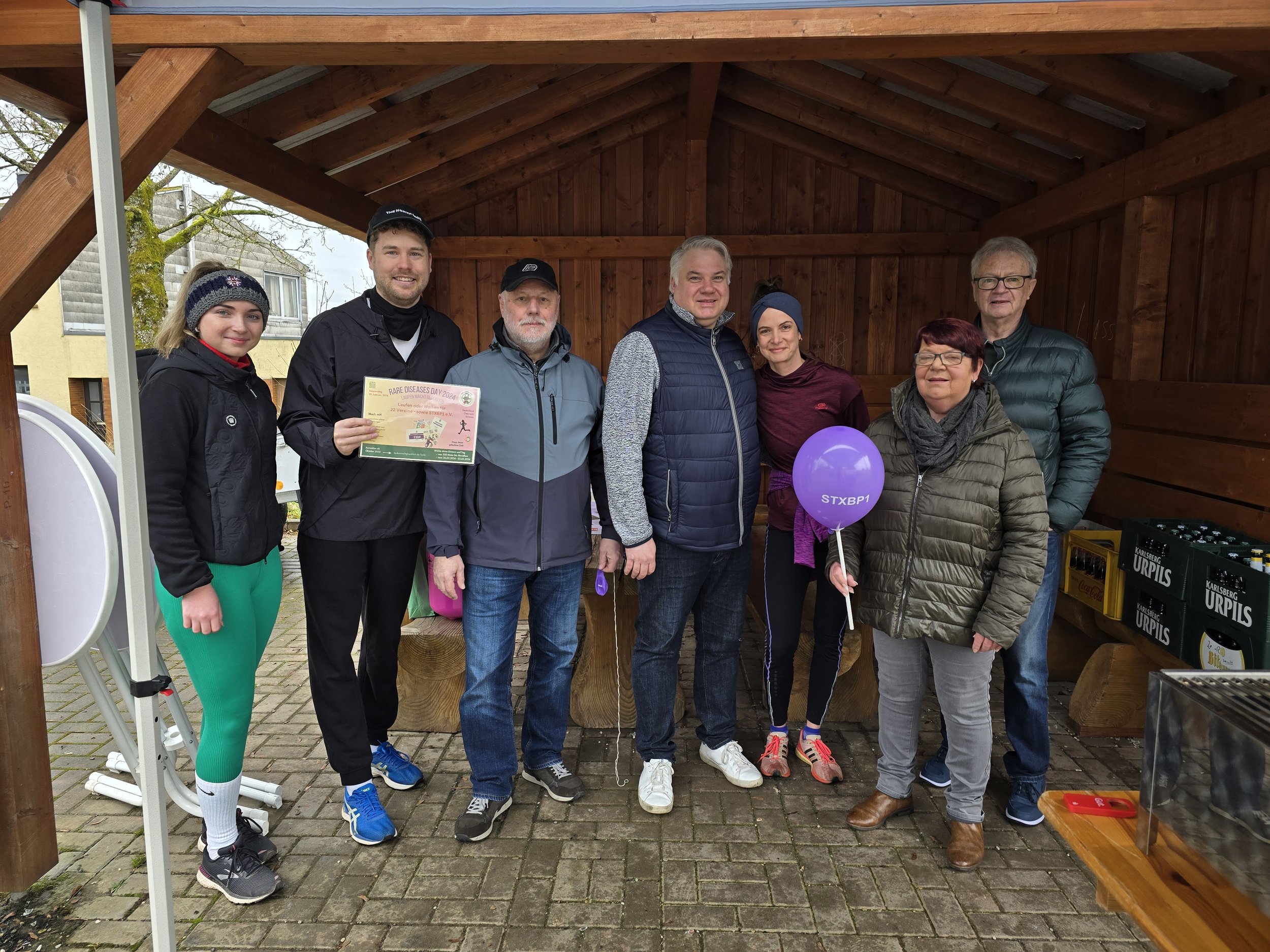See the Rare Diseases Day 2024 Run in Germany
It is March 2, 2024, and the church bells at the old railway crossing in Oberthal ring out at 10 a.m., announcing not only the hour but also the starting signal for the "Rare Diseases Run 2024", organized by "Syngap1 Elternhilfe e.V." and "Laufen Macht Glücklich" to raise awareness of rare diseases and mobilize support for those affected. Proceeds from the "Rare Diseases Run 2024" will benefit a total of 22 non-profit organizations, including STXBP1 e.V.
A special event in Oberthal, organized by the political party "CDU Oberthal"and Gilberte Schnur, member of the German STXBP1 Association and grandmother of STXBP1 child Jannek, brings the community together to raise awareness of the rare disease STXBP1. The event in Oberthal, in Saarland, Germany's smallest federal state, where two children have been diagnosed with STXBP1 - two out of 78 children in Germany - is widely reported in the newspapers.
In good weather, participants gather at the old railway crossing, where balloons with the STXBP1 symbol welcome them. As more and more runners warm up and arrive, there are many photo opportunities that capture the solidarity and community of those present.
The run lasts four hours, from 10 a.m. to 2 p.m., and offers both ambitious runners and leisurely walkers the opportunity to get involved in a good cause. After the circa 50 runners have reached the finish line, a well-earned refreshment of sausages and drinks awaits all participants.
The Globus Foundation, Lotto Rheinland-Pfalz, the Oskar Killinger Foundation, and, of course, the CDU Oberthal, which covers all entry fees and catering costs, are well-known supporters of this run. Their commitment makes it possible to give a sign of hope and, at the same time, raise important funds for research and support for the rare disease STXBP1 and other rare diseases. In Oberthal, the heart of the CDU beats for community, inclusion, and solidarity.
Gilberte Schnur





